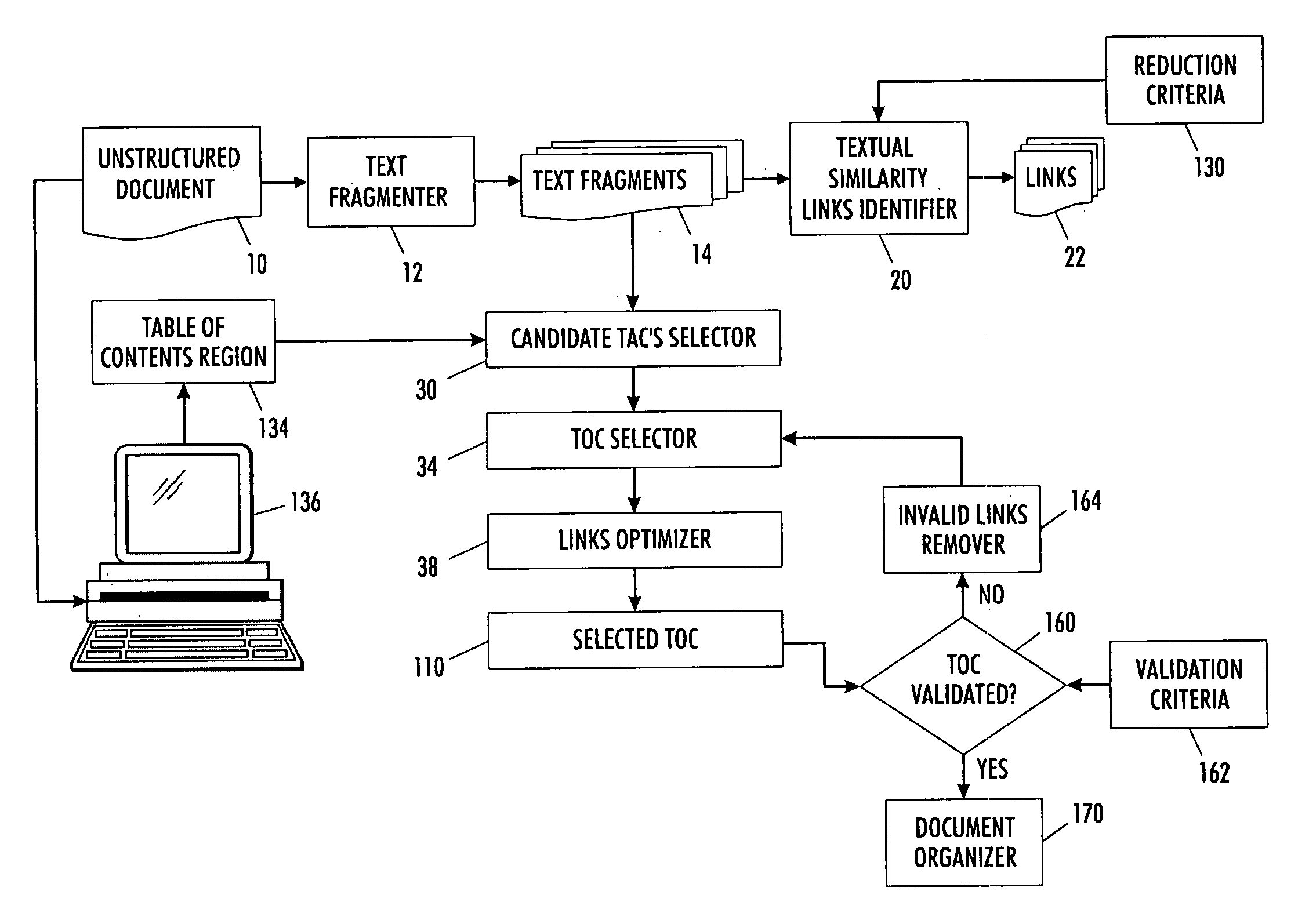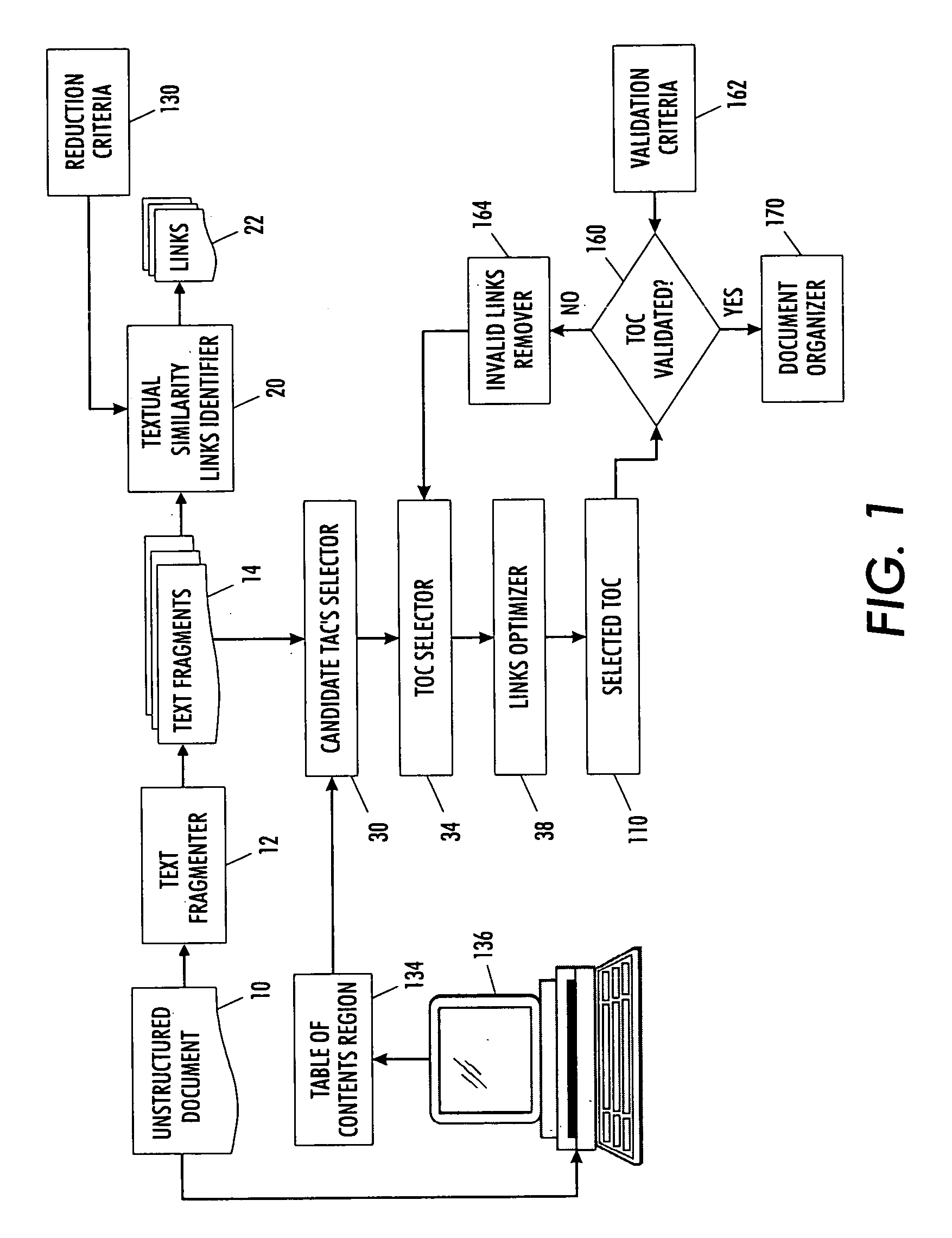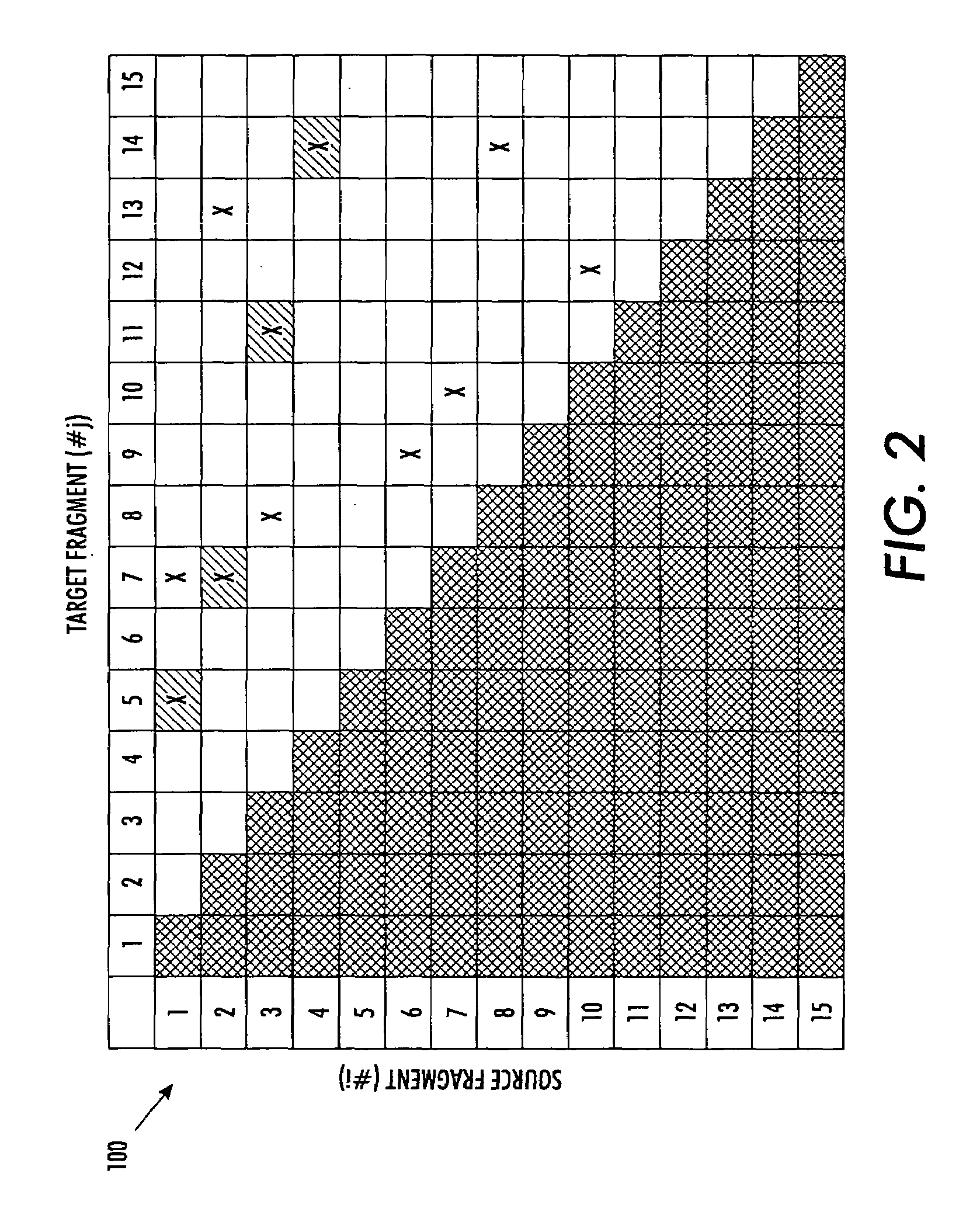Table of contents extraction with improved robustness
a table of contents and robust technology, applied in the field of information storage and processing arts, can solve the problems of poor reliability of existing table of contents extraction algorithms, difficult to achieve, and difficult to achieve the effect of improving robustness
- Summary
- Abstract
- Description
- Claims
- Application Information
AI Technical Summary
Benefits of technology
Problems solved by technology
Method used
Image
Examples
Embodiment Construction
[0024]Various techniques can be used for extracting a table of contents from a document. Typically, the output of a table of contents extractor is a set of text fragments (possibly represented by pointers to points within the document) corresponding to table of content entries, each of which is coupled with a linked text fragment (again, possibly represented by a document pointer) indicating the corresponding chapter heading, section heading, or other heading. The links between table of content entries and linked text fragments (e.g., headings) can be identified based on various criteria, such as use of distinctive heading font size and / or font style, arrangement of text fragments on a page, or so forth.
[0025]In the following, an illustrative example table of contents extraction approach based on textual similarity of text fragments, rather based on font characteristics, physical page layout, or so forth, is set forth. Insofar as font characteristics, page layout, and so forth may b...
PUM
 Login to View More
Login to View More Abstract
Description
Claims
Application Information
 Login to View More
Login to View More - R&D
- Intellectual Property
- Life Sciences
- Materials
- Tech Scout
- Unparalleled Data Quality
- Higher Quality Content
- 60% Fewer Hallucinations
Browse by: Latest US Patents, China's latest patents, Technical Efficacy Thesaurus, Application Domain, Technology Topic, Popular Technical Reports.
© 2025 PatSnap. All rights reserved.Legal|Privacy policy|Modern Slavery Act Transparency Statement|Sitemap|About US| Contact US: help@patsnap.com



